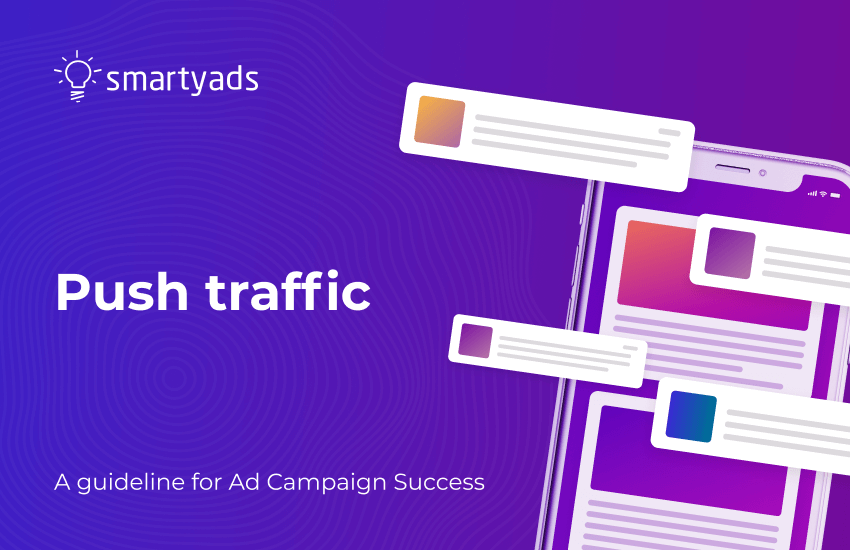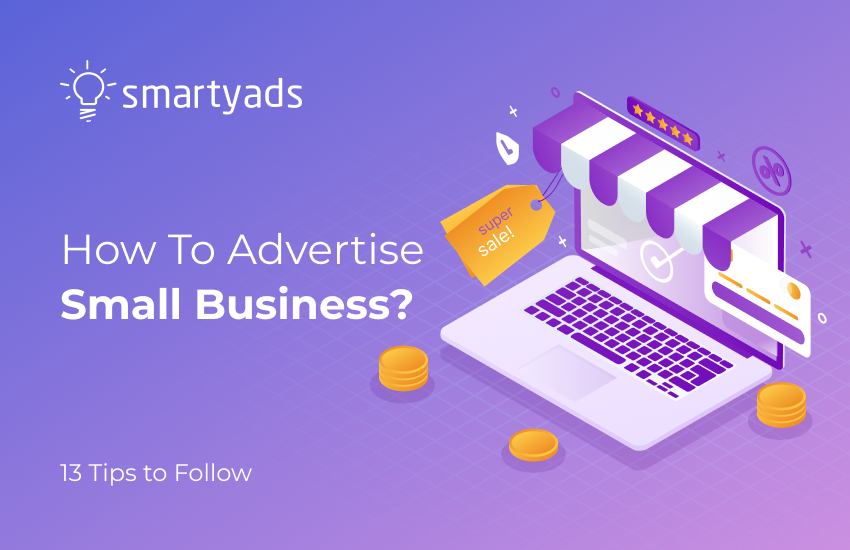Based on push statistics for iOS and Android, an average US citizen gets 46 push notifications every day. The opt-in rate for this format is high for Android (91,1%) and IOS devices (43,3%), meaning that people are actually loyal to such kinds of notifications and voluntarily subscribe to them. Currently, pushes feature one of the highest CTR (4.1% on Android and 1.7% on iOS) along with pretty much decent reaction rates (11.4% for Android and 5.5% for IOS). Still, only 8% of advertisers have managed to interweave push traffic in their ad campaigns by 2019. Let’s take push notifications apart to discover the best push traffic sources and how to use them in order to boost ad campaign outcomes.
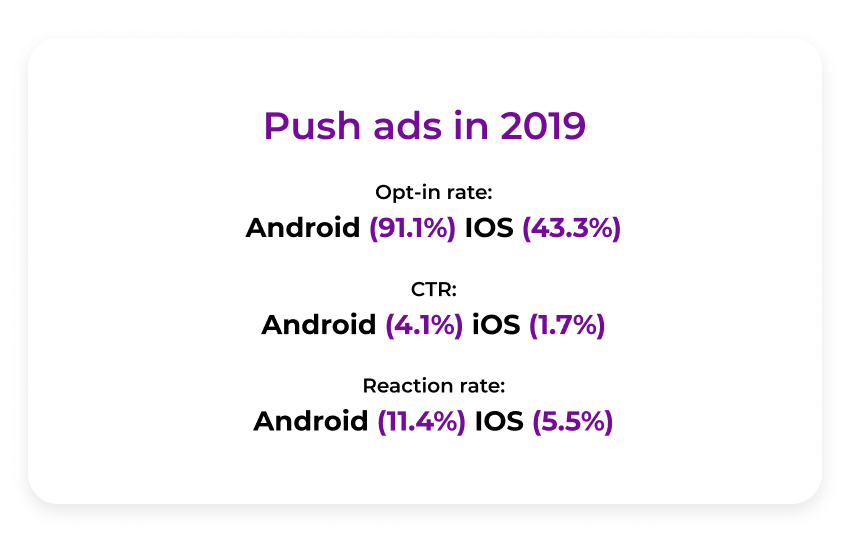
What is push traffic?
Push notification traffic is a new traffic source that quickly gains recognition among affiliate marketers because of its affordability and high-quality, human-generated impressions. It will be easier to understand what is push notification traffic if we point out straight away - there are two types of push notifications: mobile and browser.
- Mobile push. The ad arrives at the user screen as a notification from the app. It automatically appears at the lock screen, but in order to receive it, the user has to enable notifications on the device first.
- Browser push. These are cross-platform notifications that come from websites where the user has enabled a subscription. They typically deliver website news and integrate into the web browser after the consent is given.
What do these units look like?
Push ads often resemble system notifications (mobile or browser) and include 3 essential elements: text, media content, and buttons.
- Text. Usually, the text doesn’t occupy a big part of the push, containing only a couple of lines, approximately up to 250 characters. Instead, push includes a link that leads the customer to the main page with an offer that contains a full description.
- Media content. It can be a picture, GIF, or video. Pushes can be implemented only with text, but media content will make the ad visually attractive. For iOS, all media content must be pre-loaded into the application.
- Buttons. If necessary, you can integrate buttons in the push ads for convenience. The buttons will help the user to act fast upon offer: go to the app, apply a discount, or share the news with a friend.
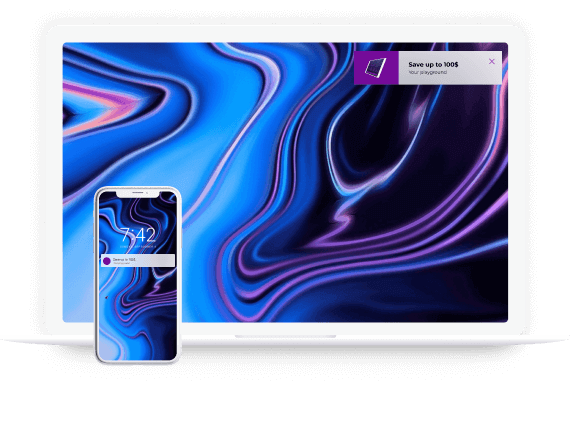
Both types of push notification traffic will suit a multitude of advertising purposes, from direct advertising to content delivery. Even though mobile and browser pushes are suited for different environments, it is easy to launch an ad campaign on both. Although previously it was an absolute must to have an app to start a mobile push campaign, now it’s possible to obtain mobile push traffic from affiliate campaigns.
Push traffic affiliate marketing
Here is an essence of affiliate push programs: after push technology is integrated into the app, it can send pushes with offers. However, the app publisher can send pushes on behalf of different advertisers to the same pool of users. Customers, in turn, receive notifications with links that lead to the target (advertiser’s) landing. Since customers understand which app sends them notifications, they trust it and don’t ignore incoming ads. This is one of the best advantages of push traffic affiliate marketing for those advertisers who can’t afford to build their own apps.
According to the STM forum survey, in 2019, push traffic, along with traffic generated by native ad formats, will be most sought after by affiliate marketers. The reason for this is that push traffic is affordable and accessible across all trending business verticals, including eCommerce, retail, and entertainment. Compared to emails (2%), push ads achieve much higher open rates (from 3% to 8%). That’s why affiliate push traffic exchanges currently feature format as the most trending.
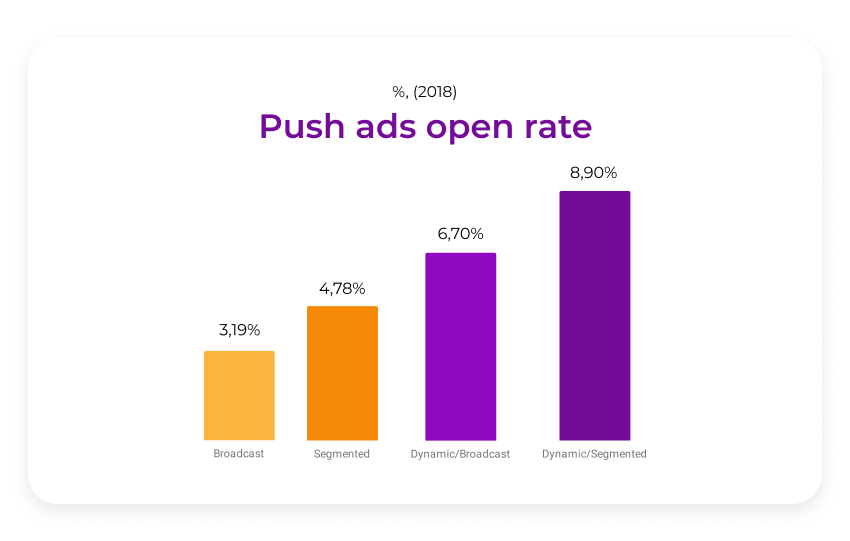
Dynamic push messaging is usually used in broadcast campaigns - those that take into account the interests and demographic data of users. Segmented push campaigns receive much higher open rates since they also involve personalization for every recipient.
Which verticals are best for push ads?
Push traffic is destined to work across all evergreen verticals. At the same time, if you plan to advertise within a very narrow and specific business vertical, it is worth to keep in mind its specifics. Some industries may generate great traffic volumes during the peak activity seasons and produce humble results when the season is down. Depending on the traffic type and quality, seasonal traffic volume fluctuations results may vary. The only way to even out these factors is to work with multiple push traffic providers at the same time.
Push notification traffic: best use cases
Mobile push notification traffic sources are especially beneficial for advertisers who strive to automate user-brand communication at every touchpoint. Applying these, you can contact the user at the most appropriate time or create an effective sales funnel that will convert potential customers when they are most inclined to make a purchase. Here is a bunch of examples:
Idea 1. Send out seasonal express sales messages, hot offers, and discounts.
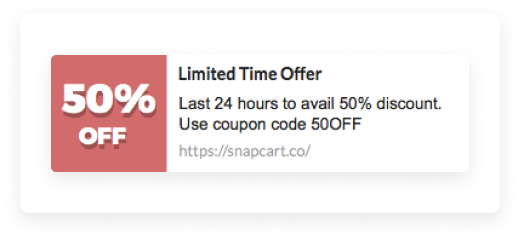
Idea 2. Make updates ‘what’s new in stock.’
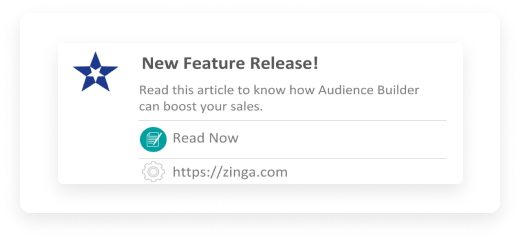
Idea 3. Send push messages with questionnaires to motivate your brand followers to visit.
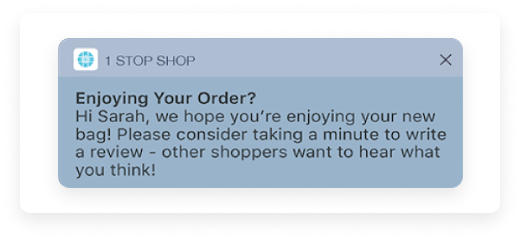
Idea 4. Advertise to your customers when they stay in the vicinity of your shop, at the concert or other topic-related fairs.
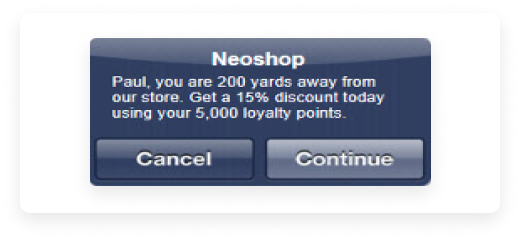
Idea 5. Use push notification messages to remind your customers about abandoned shopping carts.
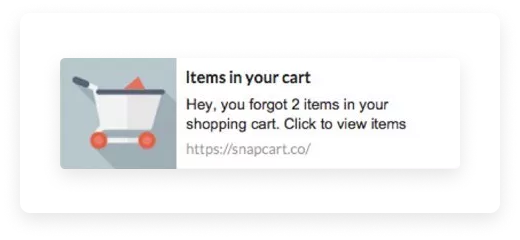
Idea 6. Send out useful information for your customers to educate them and build brand authority.
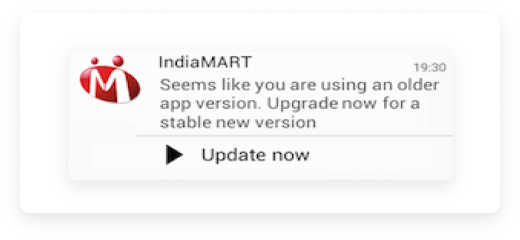
Idea 7. Encourage sales by asking users to support you through social media or by rating your brand. Provide them with a discount in exchange to get better results.
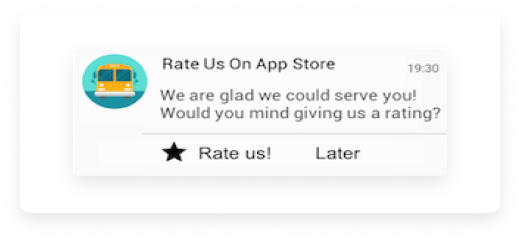
Idea 8. Organize a competition or a lottery that motivates engaged users to visit your shop or win a prize.
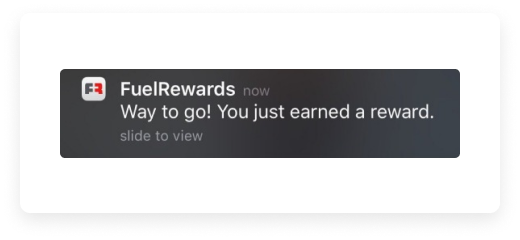
What are the benefits of pushes for advertisers?
As we already found out, push traffic is a high performer in many regards and performance metrics: open rate, opt-in rate, and engagement. It’s time to find out how exactly these tiny ad units manage to reach these results, so let’s review their advantages in more detail.
- Reach. Push mobile notification arrives even if the user screen is not active at the moment, which guarantees that potential customers will notice the message no matter what.
- Fraud-free high-quality mobile traffic. Push ad gets directly transmitted to the user whose subscription number is attributed to the device. This eliminates fraud and drives engaged audiences to the app.
- Engagement. Push ads can quickly return users to the application or webpage, offer them valuable services, and educate and inspire your audiences with interesting content.
- Personalization. Programmatic advertising helps pushes hit the right customer at the right stage of their customer journey. It helps to individualize push messages for every customer and raise the likelihood of conversion.
- Automation. All marketing processes can be automated, and purchasing of push notification traffic is not an exception. Demand-side platforms, meanwhile, help to target audiences depending on geolocation, language, time of activity, OS, browser, IP, or demographic and behavioral data (enabled by a data-management platform connection).
- Cost efficiency. Even though push traffic is fairly inexpensive, advertisers have additional opportunities to safeguard their budgets from overspending. Setting the frequency capping to “1” will mean that one user will see only one push notification in a day.
- Geofencing campaigns. Pushes can work exceptionally well even in brick-and-mortar shops as a part of geofencing campaigns. This function helps to target users on mobile devices according to their geodata, show the ads to passers-by, and encourage them to visit the store. As a result, the geo-push ad works 3 times more effectively than an average push ad unit.
- Improved conversions. Detailed reporting on your advertising platform will help advertisers find the most converting push scenarios that work for each audience segment. Additionally, the platform supports JS Tags, Iframe, HTML Tags, VAST, VPAID, and MRAID functionality that helps to track how users interact with your push creatives, how many notifications are sent, and how many are delivered.
The outcome
Push notifications that for a long time served solely for content delivery now actively conquer the market as trending ad format. Push ad delivers messages to your customers more effectively than ever: arriving directly to the user screen, it captures the user's attention in a second. Apart from this, pushes can work well for affiliate marketing campaigns that generate push traffic across various business verticals.
SmartyAds demand-side platform connects advertisers to the widest pool of top-notch publishers using algorithmic buying protocol. This way, the advertiser gets access to a huge and steady amount of traffic globally, which removes the need for traffic partner maximization and significantly reduces the cost per impression. Additionally, you can always easily maximize the capacity of every served impression with best-performing ad formats created specifically for different environments.
CTV, desktop, in-app, audio, and other ad formats are here to elevate your campaigns on SmartyAds DSP. Choose the best one and advertise with impact!
